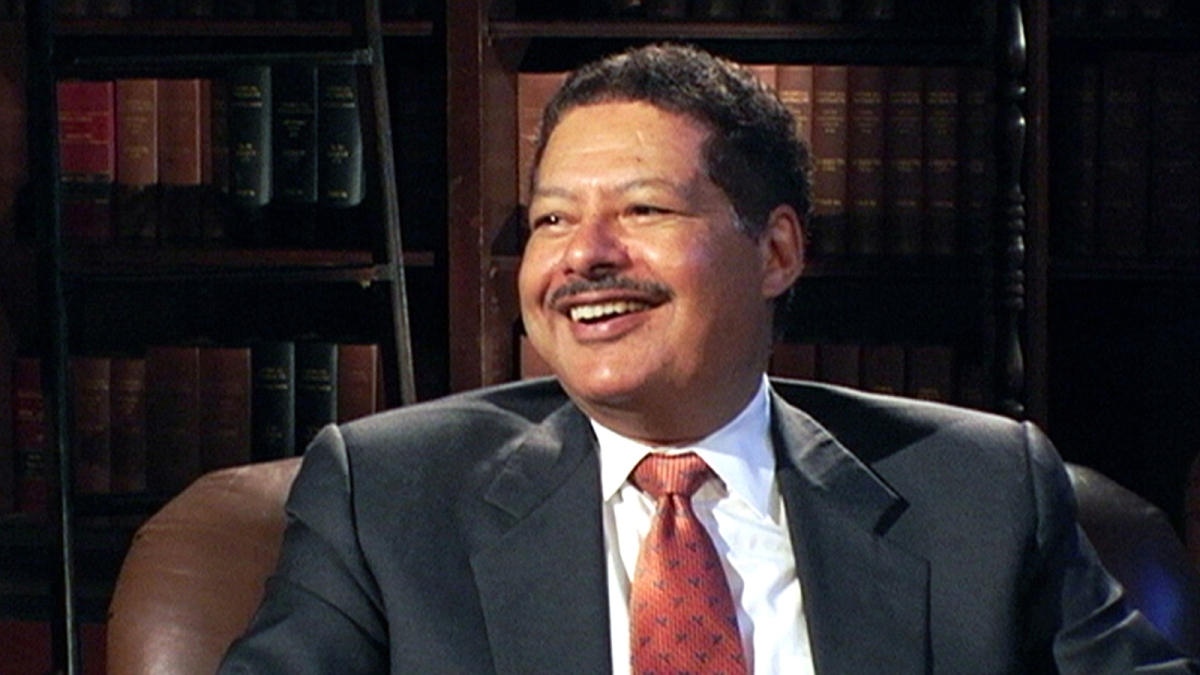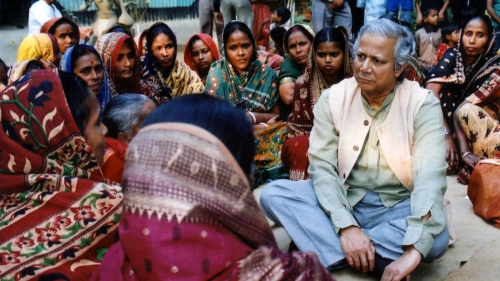Ahmed Zewail - Nobel Laureate

The complexity and the viewpoint of space and time have been both an inspiration for and a central aspect of early critical and analytical philosophy. The philosophers thinking and ideas usually focused on whether time and space exist independently of one another or not, leading to the question of time’s apparently unidirectional flow, and also whether times other than the present moment exist. This search led to many other myriad questions.
In the early 11th century, physicist Ibn al-Haytham discussed space perception, the nature of knowledge and its validity, and provided scientific rational and implications in his Book of Optics, published in 1021. Ibn Haytham defined place as a mathematical spatial extension through geometric demonstrations thus rejecting the definition of space proposed by others. He proved that vision is independent, and his model of vision led to a better understanding of the visual perception of space that convincingly proved that the intuitiveness of spatial perception must be rejected in favor of the autonomy of vision. Ibn al-Haytham proved the emission theory of vision supported by Euclid and Ptolemy wrong.
Ibn al-Haytham was a genius of his time. He was more talented man than most of the knowledgeable people of his time in fact he was more than a talented man, a genius. It has been said the difference between a talented man and a genius is that a talented man hits the target no one can hit and the genius hits the target no one else can see. Ibn al- Haytham hit the target no one else could see and proved Euclid and Ptolemy wrong.
The United Nations declared 2015 as the International Year of Light (IYL) and made a recommendation to host an International Conference on the subject. Taking this as a guide from the UN, the UNESCO convened a conference in September 2015 focusing on the accomplishments of the Islamic Civilization in its Golden Age and work of Ibn al- Haytham. One of the geniuses from the twentieth century Arab World, Ahmed Zewail, the Egyptian-American Nobel Laureate, was one of the speakers at the opening ceremony of the 2015 International Year of Light and Light-based technologies.
Ahmed Hassan Zewail was also a genius from the Arab world and he is known as the ‘father of femtochemistry and femtoscience’ because of the simple reason that he hit the target no one could see. He actually conducted the experiment by timing and measuring the change in the breaking and shifting of bonds during a chemical reaction and transformation that occur very quickly, in femtoseconds. A femtosecond is the unit of time equal to one quadrillionth or one millionth of one billionth, of a second. This is a very very minute and small time element.
Dr. Zewail became a trailblazer into the world of molecules and chemical reactions when a phase transitions occur. Dr. Zewail moved his inquisitiveness and the intelligence to higher levels and studied various aspects of laser technology, the evolutionary and revolutionary development of microscopic imaging, ending up in developing a new process and a method to measure the timing of a chemical reaction. He firmly believed in the simplicity-in-complexity of a scientific issue and explored all avenues to resolve the inner workings of an invisible atom at higher speed. Dr. Zewail developed a technique that allowed him to measure the time, of the bonding and bursting of molecules, in real time by allowing laser to fire ultra-short pulses and then capture real-time of the actual event, in femtoseconds.
This has placed Ahmed Zewail in the category of geniuses. His methodology overcame the fundamental problems of measuring the time of chemical reactions that occur in nanoseconds and enabled him to make measurements far beyond nanoseconds in femtoseconds.
He won the 1999 Nobel Prize in Chemistry. The citation from the Nobel Committee reads, in part, that Zewail “is being rewarded for his pioneering investigation of fundamental chemical reactions, using ultra-short laser flashes on the time scale on which the reactions actually occur.”
Ahmed Zewail, a very sociable and friendly person of a pleasant disposition, was appointed on April 27, 2009 to the President Obama’s Council of Advisors on Science and Technology, and in November of the same year, he was named the first US Science Envoy to the Middle East. He made multiple trips to the Middle East to build collaboration in science and science education. In many seminars he was invited to reflect on his work and to share his views on science, innovation and technology transfer. His country of birth, Egypt has issued postage stamps to honor his contributions to science and humanity.
For effective participation of the Egyptian society in twenty first century science and for elevating local technologies to the world level, Zewail City of Science and Technology was established in Giza city in Egypt that has three constituents; the University, the Research Institutes and the Technology Pyramid. Zewail city of science and technology currently has seven research institutes: Institute for Medical Sciences, Institute for Nanoscience and Informatics, Institute for Imaging and Visualization, Institute for Basic Sciences, Institute for Energy, Environment and Space, Institute for Economics and Global Affairs, and Institute for Virtual Education.
Ahmed Zewail, the Linus Pauling Professor of Chemistry and Professor of Physics, and director of the Physical Biology Center for Ultrafast Science and Technology served on California Institute of Technology’s faculty for 40 years. The California Institute of Technology is popularly known as Caltech and is located in the city of Pasadean, Los Angeles county, California.
Dr. Ahmed Zewail passed away, on Tuesday August 2, 2016, in the city of Pasadena, California. A brilliant human being, a genius, who was continuing his work at Caltech and at the same time leading a global effort to promote the understanding and appreciation of science in the Middle East countries and the Muslim world. He was eager about the establishment of a new partnership between the developing world and the developed one, in order to change the plight of the 80% population of have-nots. He always spoke about major issues facing the world, focusing on the number one concern, the education, that is threatening our peaceful coexistence. He was also concerned about culturally-induced ignorance.
Ahmed Zewail attended Seminars, forums, symposium around the world; spoke about science and humanity. Here are some of his quotes:
· The world is an uncertain place, which is why the future and the unknown absolutely fascinate us.
· Since the beginning of human civilization, science and technology has progressed in a continuous process. Fire must have been an exciting new technology for the first humans and to this day we are continuing research to fully answer the question, what is fire? But the search for new knowledge is based on rational thinking, which is fundamental for progress and for making new discoveries.
· In the knowledge-based twenty-first century there are countries with populations approaching 50% illiteracy.
· We must dream, and armed with the excellent education go simply on a quest for knowledge.
· History teaches us the value of free scientific inquisitiveness.
· We Arabs Must Wage a New Form of Jihad:
The cataclysmic wars in Lebanon, Palestine, and Iraq have uncovered the reality of Arab unity and plight, and the collective conscience of international society. It is abundantly clear that the Arab people must themselves build a new system for a new future. The current state, as judged by a low GDP, high level of illiteracy, and deteriorating performance in education and science, is neither in consonance with their hearts and minds nor does it provide for their political, economic, and educational aspirations. (Independent, August 24, 2006.)
· Scientific Revolution:
Scientific research in the Arabian, Persian and Turkish Middle East lags behind that of the west. Of course, there are individual scientists who produce world-class research and there are institutions and nations which make significant contributions in certain fields. Publication and citation indicators show some encouraging trends. But naturally one asks: "Why have Arab, Persian and Turkish scientists as a group underperformed compared with their colleagues in the West or with those rising in the East?" (New Scientist, April 23, 2011)
In the last few years Dr. Ahmed Zewail - Nobel Laureateas engaged in research at the 4D level – space and time, which translate into typically the three dimensions of space (length, breadth and depth) plus time. Dr. Ahmed Zewail was fascinated by the human development from Alhazen’s Camera Obscura or pinhole camera to 4D Microscopy. One genius, Ahmed Zewail, talked about another genius, Ibn al-Haythan, and often discussed Ibn al-Haytham’s measurement of time and space. Please note that Ibn al-Haytham is known as Alhazen in the west by his Latinized name. Dr Zewail said, “ From Alhazen’s camera obscura, to Hooke and van Leeuwenhoek’s two dimensional optical micrography, and then on to three- and four dimensional (4D) electron microscopy, these developments over a millennium have transformed human’s scope of visualization. The changes in the length and time scales involved are unimaginable, beginning with the visible shadows of candles at the centimeter and second scales, and ending with invisible atoms with space and time dimensions of sub-nanometer and femtosecond.”
Using the four-dimensional electron microscopy technique that makes filming of the invisible inner workings of a cell possible, Dr. Zewail successfully conducted experiments and measured time in femtoseconds. He found that his new research has applications in a wide range of fields including materials science, nanotechnology and medicine. After his passing away his unfinished task will be taken over by someone else, and that person better be a very talented person who is able to immerse himself into the deep ditches of darkness where molecules and photons reside.
*****
Mohammad Yacoob is a retired industrial engineer and engineering proposals analyst who lives in Los Angeles, California






